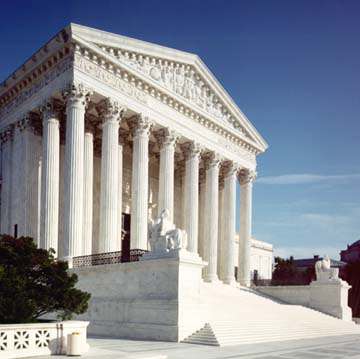
Prosecutorial misconduct, including withholding evidence favorable to the defense, is the most common cause of wrongful convictions in death penalty cases, but prosecutors frequently fail to disclose this evidence, narrowly interpreting the U.S. Supreme Court’s 1963 decision in Brady v. Maryland calling for its disclosure. On March 29, the Court will hear two consolidated cases—Turner v. United States and Overton v. United States—that raise questions under Brady as to when courts should grant defendants a new trial when prosecutors fail to disclose exculpatory evidence to the defense. While the Court may narrowly address Brady’s application to these two cases, attorney and legal commentator Bidish Sarma argues that Turner-Overton presents an opportunity for the Court to “clarify principles and curtail the confusion that permeates lower courts’ opinions.” Prosecutors currently argue that they may consider the materiality of evidence that favors the defense when they decide whether to disclose that evidence. Others say all evidence favorable to the defense must be disclosed, irrespective of materiality. Withholding favorable evidence from the defense appears to work — a study by the VERITAS Initiative of Santa Clara University School of Law and the National Association of Criminal Defense Lawyers found that courts upheld convictions in 86 percent of the cases in which they found that prosecutors had suppressed exculpatory evidence. An amicus brief by the Texas Public Policy Foundation, FreedomWorks, Cause of Action Institute, and American Legislative Exchange Council urges the Court to make it clear that prosecutors must turn over all evidence favorable to the defense, saying, “[r]equiring production of all favorable evidence solves the problem that prosecutors face in administering the current materiality standard.” A recent study by the National Registry of Exonerations found that more than half of all murder exonerations involved Brady violations. According to that study, official misconduct was more common in cases involving black defendants (76%) than white defendants (63%). That disparity grew in capital cases, where 87% of death-row exonerations of black defendants involved official misconduct, compared to 67% of death-row exonerations of white defendants. A DPIC analysis of recent death-row exonerations found that police or prosecutorial misconduct was a major factor in 16 of the last 18 exonerations. DPIC’s review of the National Registry’s 2016 exoneration data also found that every one of the 13 murder exonerations in which prosecutors had sought or threatened to impose the death penalty involved either official misconduct or perjured testimony/false accusation, and eleven (84.6%) of them involved both.
(B. Sarma, “Will the Supreme Court Reinvigorate the Brady Doctrine in Turner and Overton?,” American Constitution Society Blog, March 13, 2017; “Material Indifference: How Courts Are Impeding Fair Disclosure in Criminal Cases,” National Association of Criminal Defense Lawyers, November 17, 2014.) Read the amicus curiae brief of the Texas Public Policy Foundation, et. al. Read the amicus curiae brief of the Cato Institute. See U.S. Supreme Court and Prosecutorial Misconduct.

